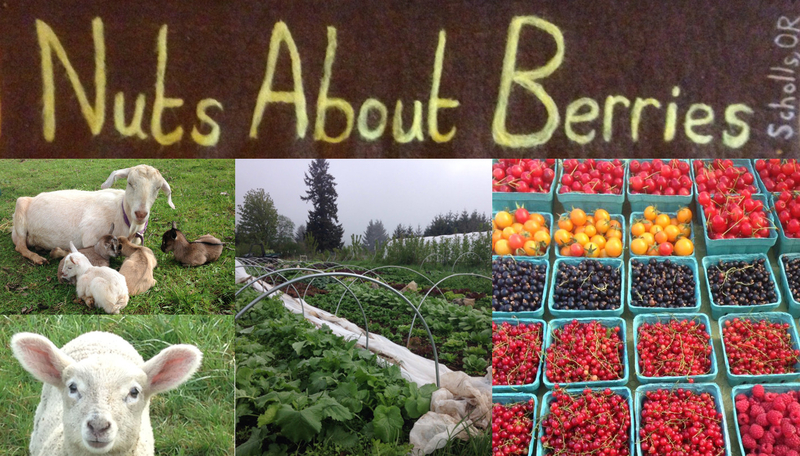
Nuts About Berries grows a very diverse selection of vegetables, berries, fruit and herbs. Of course one reason for the diversity of crops is this is what we eat, every day. Another reason for this diversity is it spreads the financial risk.
If you grow just one crop or a few crops then there is immense pressure to harvest those crops no matter what. Monocultures require large amounts of inputs (fertilizer, sprays) just to ensure a harvest. If we can't harvest a crop, then that is okay as it frees up time for the other crops.
This simple principle guides our agricultural practices. If the spring is really wet, then the more water loving crops (e.g. spinach, salad turnips) do really well. If spring warms up early, then we might skip a planting or two of those water loving crops and plant the heat loving summer crops early. We do protect them when the temperature inevitability dips again.
Pest Control
This means we don't spray our crops with anything, never have. No pesticides, no fungicides and no herbicides. As an aside, we have a small orchard with apple and pear trees. The pests (coddling moth) love the apples so much that they kind of leave the pears alone. We press the apples for cider and eat the pears (we do have a couple of apple trees that the pests don't bother --- no idea why, so we eat those apples).
A diversity of crops allows us to rotate crops to different areas of the garden. Crop rotation is a key element for avoiding pest damage. If the pests have to travel further to find their desired crop then that gives us a time window to sometimes avoid pest damage entirely or perhaps to trap the pest to eliminate it before it reaches our crops.
We also use exclusion - this means a cover for the crops that allows water and sun to pass through but keeps the pests out (most of the time). This works well when the pest density is low so it goes hand in hand with crop rotation. Crop rotation delays the pest arrival, and row covers protect the crop from the early arriving pests. For our greens, we use an expensive row cover that also eliminates heating which can be a problem when using traditional row cover for greens.
Maintaining Freshness
Our farm is small, tiny by some standards, but that does mean it is a short distance and time between harvesting the crop in the field and getting to the wash and pack station then on to the cooler. We also try to harvest greens before about 10.30 AM. Avoiding or quickly removing field heat is a significant factor in keeping a crop fresh.
Power & Tools
We use on site solar power for all of our residence, greenhouses, seeding space, refrigeration, irrigation needs. To further reduce our reliance on fossil fuels, we have a farm built electric tiller (the "beast"), an electric tilther for incorporating compost and amendments without tilling and an electric mini tiller for hilling crops (corn, leeks, potatoes) and weeding pathways.
We use an extensive collection of hand tools for weeding and planting (paperpot transplanter). We still use a diesel 4 wheel tractor when time is of the essence or for incorporating cover crop in the spring. And we use a 2 wheel gas powered walking tractor for a lot of initial bed preparation in the spring and summer.
Some growing areas are exclusively no till, but in general we use a rotary harrow on the 2 wheel tractor that, while it does disturb the surface some, it does not invert the soil layers. Large tarps also play a role on the farm both as a walking and weed free surface between crops (e.g. tomatoes) and also to break down a previous crop that was mowed so that we can plant the subsequent crop without having to till.
We compost crop residue for applying to beds and potting up transplants (tomatoes etc.). But we also buy in growing mix, natural fertilizers, lime and mineral supplements.
